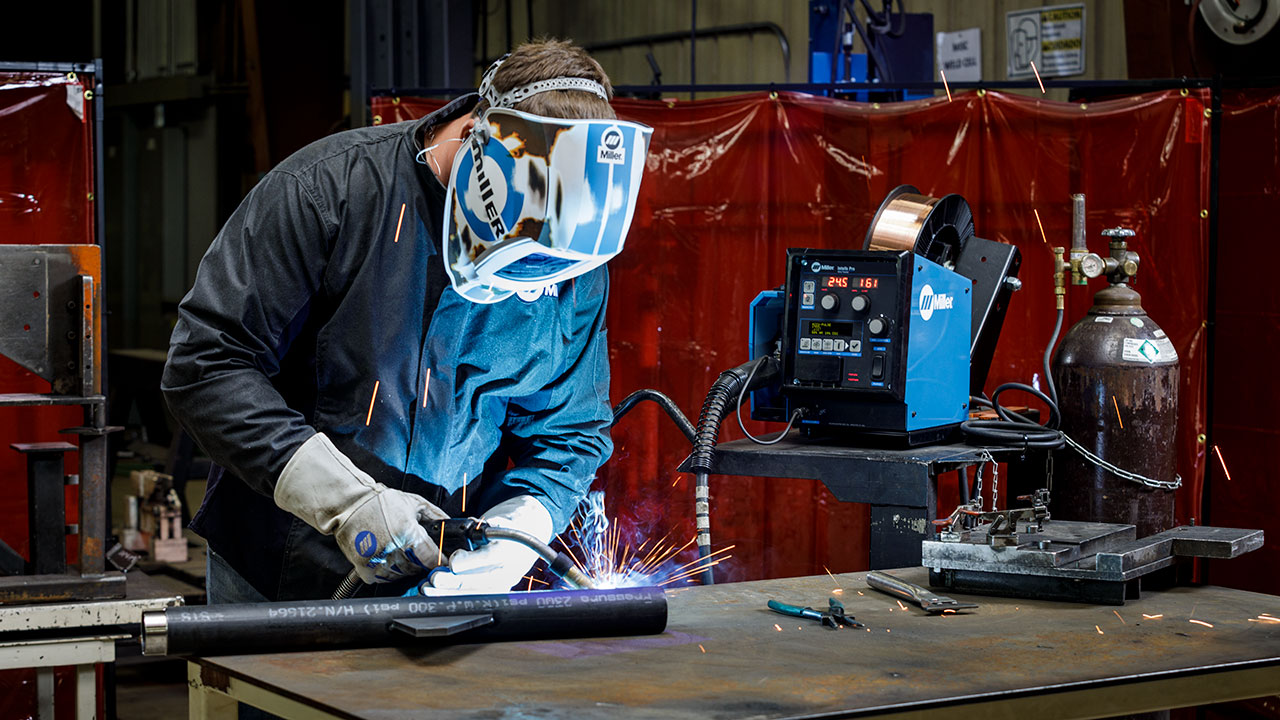Optimizing Your Welding WPS: Strategies for Improved Performance and Efficiency
Optimizing Your Welding WPS: Strategies for Improved Performance and Efficiency
Blog Article
Achieving Welding Excellence: Revealing the Keys of WPS Implementation and Optimization
In the world of welding, accomplishing excellence is a search that pivots on the meticulous execution and optimization of Welding Treatment Specs (WPS) By delving right into the crucial aspects, strategies, challenges, and finest methods connected with WPS, a globe of welding excellence waits for those who are prepared to discover its depths.
Relevance of WPS in Welding
The Importance of Welding Procedure Specifications (WPS) in the welding industry can not be overemphasized, functioning as the foundation for ensuring uniformity, quality, and security in welding operations. A WPS supplies detailed directions on exactly how welding is to be brought out, including vital variables such as materials, welding procedures, joint style, filler steels, preheat and interpass temperatures, welding currents, voltages, traveling speeds, and a lot more. By adhering to a distinct WPS, welders can keep harmony in their work, causing regular weld quality across various tasks.

Secret Elements of WPS
Going over the integral parts of a welding treatment specification (WPS) is essential for comprehending its role in welding operations. A detailed WPS includes numerous essential components that assist welders in attaining quality and consistency in their work. One crucial aspect of a WPS is the welding procedure specification, which lays out the particular welding procedures to be utilized, such as gas tungsten arc welding (GTAW) or secured steel arc welding (SMAW) Additionally, the WPS includes details on the welding materials, such as the kind and specs of the base steel and filler steel to be utilized. The WPS additionally defines crucial variables like welding specifications, preheat and interpass temperature requirements, and post-weld heat treatment procedures. Furthermore, it includes details on joint layout, fit-up, and any unique techniques or precautions necessary for the welding procedure. By incorporating these crucial elements into the WPS, welding treatments can be standardized, ensuring high quality, performance, and security in welding procedures.
Strategies for WPS Optimization

Secondly, training and credentials of welding personnel according to the specific needs of the WPS is extremely important. Providing detailed training programs and ensuring that welders are certified to implement treatments outlined in the Going Here WPS can lead to better welds and lowered rework.
Furthermore, leveraging technology such as welding software program and monitoring systems can assist in maximizing WPS. These devices can assist in tracking variables, making sure criteria are within specified restrictions, and providing real-time comments to welders, allowing them to make prompt modifications for improved weld high quality.
Usual Difficulties and Solutions
Dealing with obstacles in executing the approaches for WPS optimization can hinder welding procedures' efficiency and quality. One usual difficulty is insufficient training or understanding of the welding procedure specifications (WPS) amongst the welding group.
Another challenge is the lack of appropriate documentation and record-keeping, which is important for WPS optimization. Without clear records of welding specifications, products utilized, and assessment outcomes, it comes to be difficult to determine areas for improvement and guarantee consistency in welding processes. Executing a durable paperwork system, such as digital welding management software application, can assist improve record-keeping and assist in information analysis for continuous improvement.
In addition, inconsistent welding tools calibration and maintenance can pose a considerable challenge to WPS optimization. Routine equipment checks, calibration, and upkeep schedules ought to be stuck to strictly to ensure that welding criteria are accurately regulated and preserved within the defined tolerances (welding WPS). By attending to these common obstacles with positive services, welding procedures can improve performance, high quality, and total welding excellence
Finest Practices for WPS Execution
To guarantee effective WPS execution in welding operations, adherence to market requirements and thorough attention to detail are vital. When launching WPS implementation, it is important to begin by extensively understanding the particular welding demands of the task. This entails a detailed review of the welding procedure requirements, materials to be welded, and the ecological problems in which the welding will take location.
Once the requirements are clear, the following action is to select the proper welding treatment that lines up with these specs. This entails consulting the relevant codes and standards, such as those offered by the American Welding Society (AWS) or the International Company for Standardization (ISO), to make sure conformity and their explanation quality.
Moreover, recording the whole WPS implementation process is important for traceability and high quality control. Comprehensive records ought to be kept concerning welding specifications, product preparation, preheat and interpass temperatures, welding consumables made use of, and any kind of deviations from the original treatment. Routine audits and evaluations of the WPS can aid identify areas for improvement and ensure ongoing optimization of the welding procedure.


Final Thought
Finally, the application and optimization of Welding Treatment Specifications (WPS) is vital for achieving welding excellence. By recognizing the key elements of WPS, carrying out effective methods for optimization, addressing typical obstacles, and complying with best methods, welders can make sure high-quality welds and risk-free working problems. It is critical for professionals in the welding market to prioritize the appropriate execution of WPS to improve general welding efficiency and accomplish wanted outcomes.
The other Value of Welding Treatment Requirements (WPS) in the welding sector can not be overemphasized, offering as the backbone for guaranteeing consistency, quality, and security in welding procedures. A WPS provides detailed directions on exactly how welding is to be brought out, including crucial variables such as products, welding procedures, joint design, filler metals, preheat and interpass temperatures, welding currents, voltages, travel speeds, and extra. One crucial element of a WPS is the welding procedure requirements, which lays out the details welding processes to be utilized, such as gas tungsten arc welding (GTAW) or secured steel arc welding (SMAW) By integrating these crucial aspects right into the WPS, welding treatments can be standard, making sure top quality, efficiency, and safety and security in welding operations.
It is important for professionals in the welding sector to focus on the correct application of WPS to enhance total welding efficiency and attain preferred end results.
Report this page